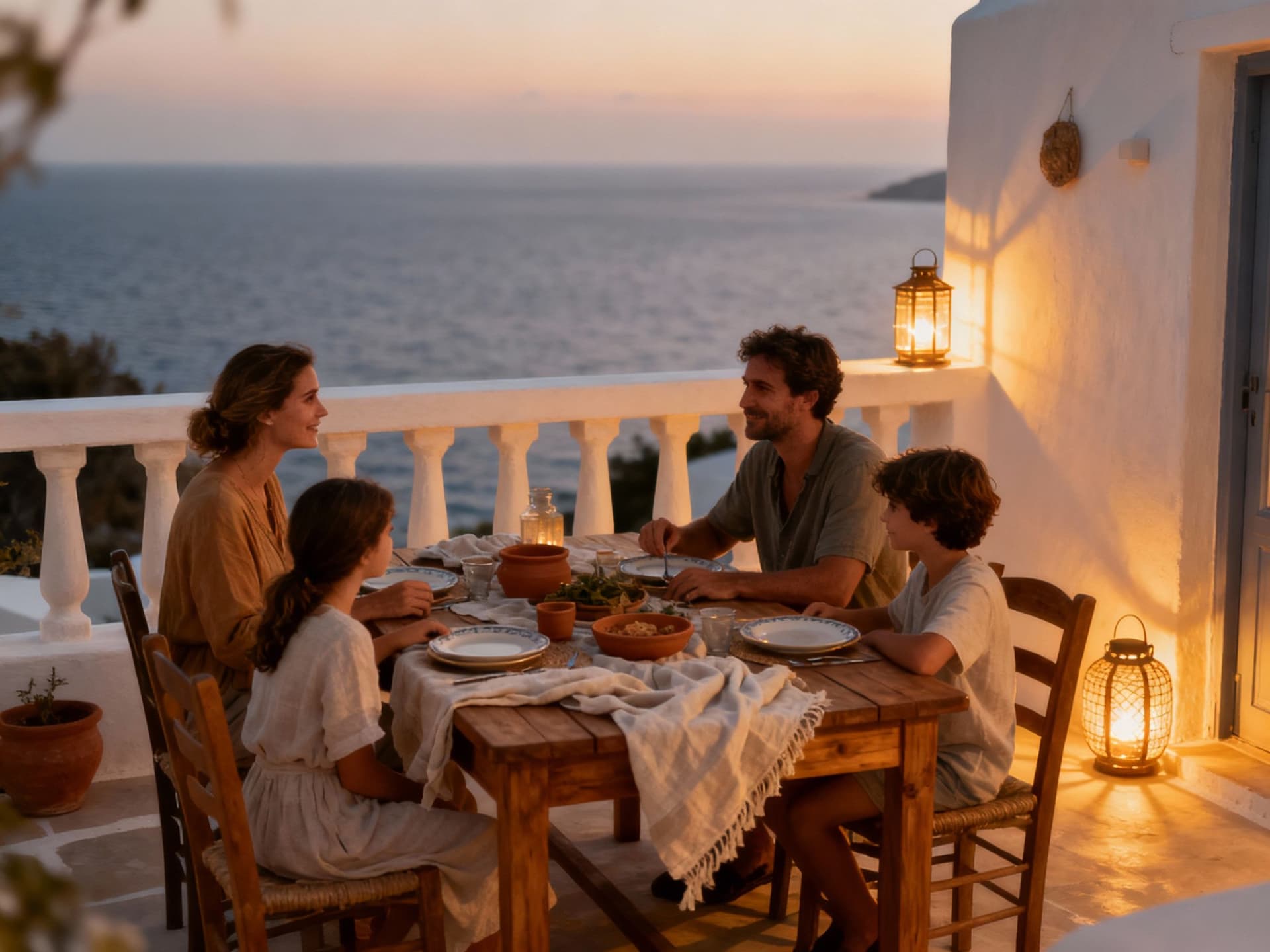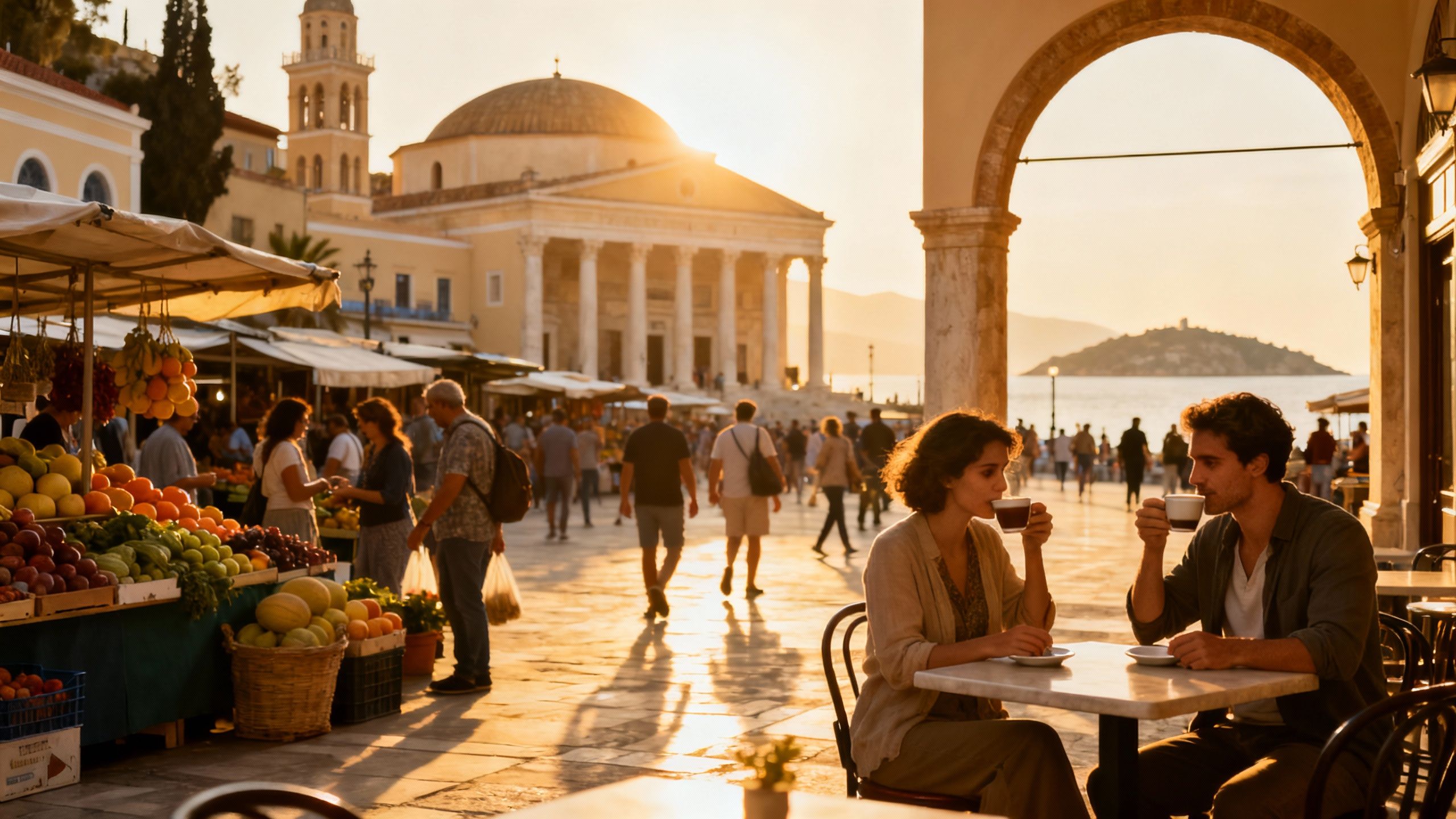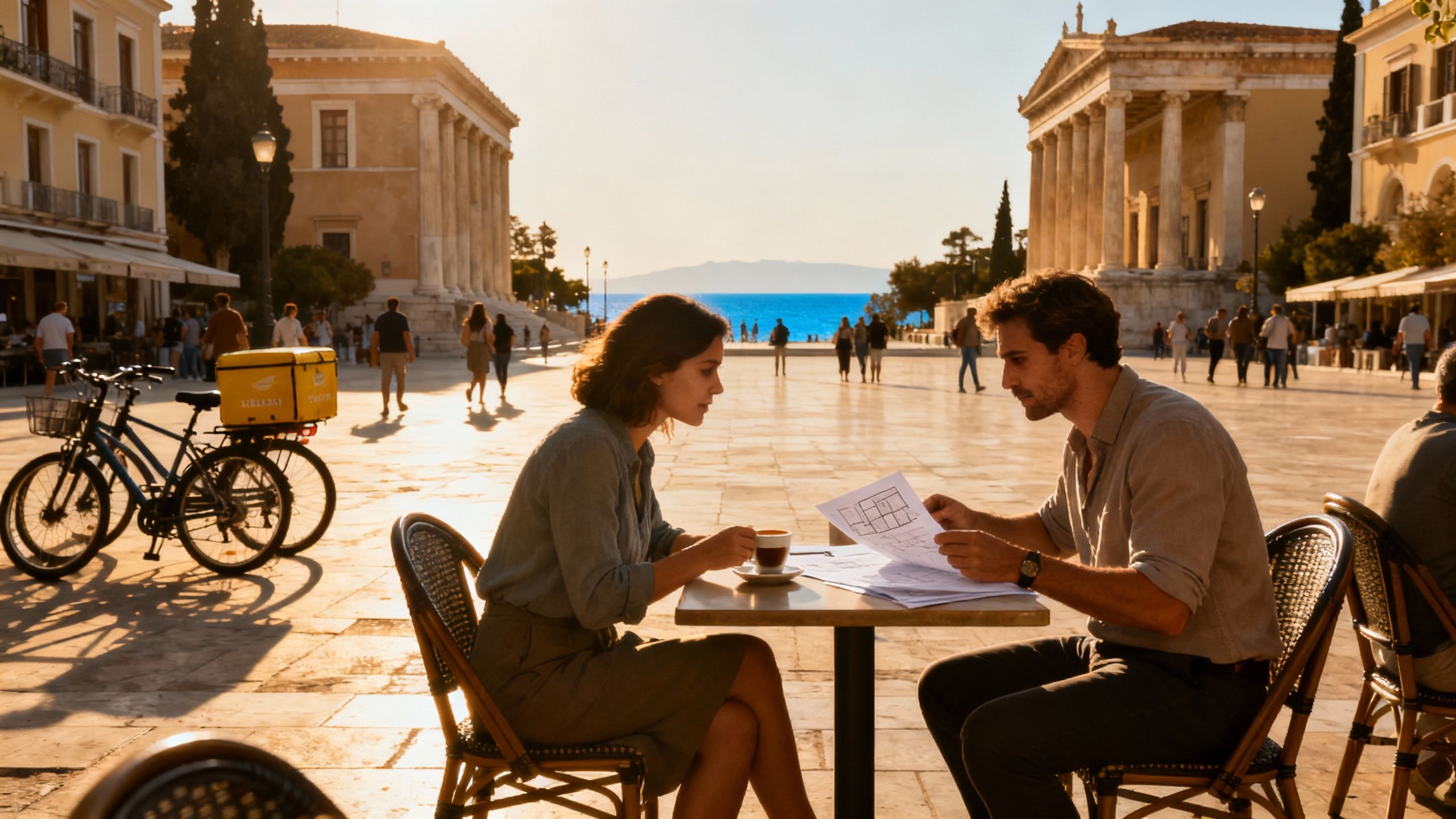Earthquake Risk, Seaside Charm: Insurance Wisdom for Greece
Contrary to fear, seismic exposure in Greece is manageable: verify cadastral title, commission a seismic survey, and layer insurance for structure, contents and rental loss.
Imagine mornings in Plaka with a small ceramic cup of espresso, or evenings on a wind-swept Cycladic terrace where bougainvillea drapes a stone balustrade. Greece is a life shaped by light, closeness to sea and mountain, neighbourhoods that know your name and tavernas where people linger. For many international buyers the romance is the first step; the questions about resilience, documentation and insurance follow soon after.
Living the Greece lifestyle

Greece’s daily rhythm is unabashedly local: early market runs to Varvakios in Athens or the Saturday farmer’s market in Chania, slow lunches of grilled fish and lemon, and late-night walks past shuttered neoclassical façades. Whether you choose the leafy lanes off Kolonaki, the low-slung villas of Glyfada, or the whitewashed lanes of Serifos, life is tactile — marble thresholds, wrought-iron balconies, and neighbourhood shops where the owner greets you by name. This texture of daily life is what informs sensible property choices: proximity to a market, sun exposure for terraces, and ease of local services matter nearly as much as view.
Athens and islands: distinct rhythms
Athens offers the cultivated city life — neoclassical promenades, small galleries tucked in Psiri, neighbourhood cafés in Exarchia and Kolonaki’s quiet, curated shops. By contrast, islands such as Paros and Syros favour slow mornings, harbour-side cafés, and a seasonal swell of life in summer. For buyers this means matching your daily expectations: do you want year-round services and healthcare close by (Athens, Thessaloniki), or a seasonal, maritime life where property use and insurance considerations change with the calendar?
Food, markets and small pleasures
Picture a Saturday morning in Chania’s Agora — citrus-scented air, crates of hand-cured olives, and a local baker slicing warm daktylidia. These small rituals matter when choosing a neighbourhood: a reliable market means less dependence on cars; proximate cafés and a year-round community suggest steadier rental demand should you choose to let. The lived experience should shape insurance and protection choices too — a house near cliffs will need different cover than one in a dense urban block.
- Lifestyle highlights to look for
- Varvakios Market (Athens) — everyday produce and community pulse
- Aegean harbour mornings — working harbours in Hermoupolis (Syros) and Naoussa (Paros)
- Kolonaki and Exarchia lanes — cafes, galleries and quiet residential streets
- Local bakeries and butcher shops — indicators of neighborhood year‑round life
Making the move: practical considerations

The market has been firm: recent central bank and industry data show meaningful price gains across cities and many islands, which matters for insurance and risk allocation. Rising values change replacement-cost calculations and the thresholds at which insurers will offer full structural cover. Before you commit, translate romantic value into replacement cost and market value; insurers price premiums on expected reconstruction costs as well as location-specific hazards.
Property types and their insurance implications
Stone-built island houses, reinforced concrete city apartments and restored neoclassic townhouses each carry different risks. Older masonry buildings may need seismic strengthening; modern reinforced-concrete structures can present hidden maintenance liabilities. Confirm cadastral registration and precise boundaries with the Hellenic Cadastre before insuring — gaps in registration complicate claims and can delay payouts. A clear title is the single most effective mitigation for post-loss recovery.
Working with local experts
A Greek‑licensed lawyer, an architect or structural engineer familiar with local seismic codes, and an insurance broker versed in Greek market practice are essential. Agencies serve as cultural translators: they locate neighbourhood nuance and advise which properties have solid documentation, which streets flood in autumn storms, and which terraces have legitimate planning permissions. Use local expertise to map lifestyle desires to insurable realities.
- Steps to secure property and cover in Greece
- Commission a cadastral/title search; obtain certified translations of deeds.
- Order a structural survey with seismic performance notes if the building predates modern codes.
- Work with an insurance broker to model replacement cost and contents valuation, not just sale price.
- Layer cover: structural/contents, liability, and short-term rental/loss-of-income where appropriate.
- Agree clear claims process and local adjuster access before exchange of contracts.
Insider knowledge: what expats wish they'd known
Contrary to common fear, seismic risk in Greece is not an insurmountable barrier — but it is often misunderstood. After the 2020 Samos event a post‑quake analysis found that earthquake insurance penetration for residential stock was low (roughly 10–15%). This gap means many buyers overestimate insurer protection and underestimate the need for structural resilience and clear title — two things that directly affect recoverability.
The ‘seismic premium’ myth
Many assume properties on islands or near fault lines are uninsurable or carry runaway premiums. In practice, insurers price risk pragmatically: age of construction, building materials, and documented seismic upgrades matter more than a generic location label. A modest investment in retrofit work or a certified engineering report frequently lowers premiums more than simply searching for a ‘safer’ island.
Long‑term stewardship and rental realities
If you plan to rent seasonally, note that higher yields often coincide with higher turnover and the need for short‑term rental cover. Central bank and agency data show price growth across Greece; with values rising, correctly calibrated insurance becomes a small fraction of total holding costs but a decisive factor when recovering from damage. Consider owner-managed checklists for winterising island properties and appoint a local manager with delegated authority for claims.
- Practical protections every buyer should insist on
- Verified cadastral registration and up‑to‑date title deeds
- Seismic survey or engineer’s certificate for older buildings
- Contents inventory with photographs and receipts
- Local claims contact and a power of attorney for urgent interventions
- Short‑term rental and liability clauses if you intend to let
Conclusion: the right protection lets you live the life you imagined. In Greece the architecture, markets and quotidian rituals reward a life lived close to place; prudent insurance and clear title protect that life. Begin with a trusted lawyer and a local broker, commission a structural survey if necessary, and think in layers — documentation, resilience, and tailored insurance. With these in place, the light on a Cycladic terrace is a durable asset, not a fragile fantasy.
Having moved from Stockholm to Marbella in 2018, I help Scandinavian buyers navigate Spanish property law, restoration quality, and value through authentic provenance.


